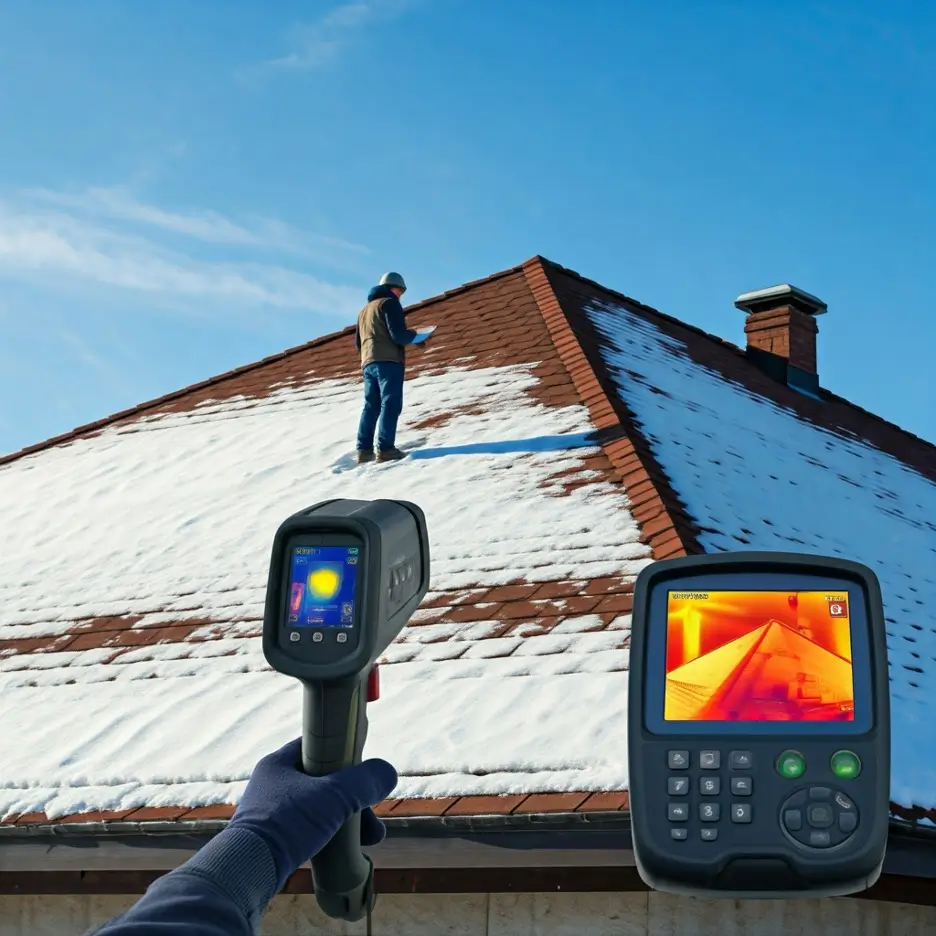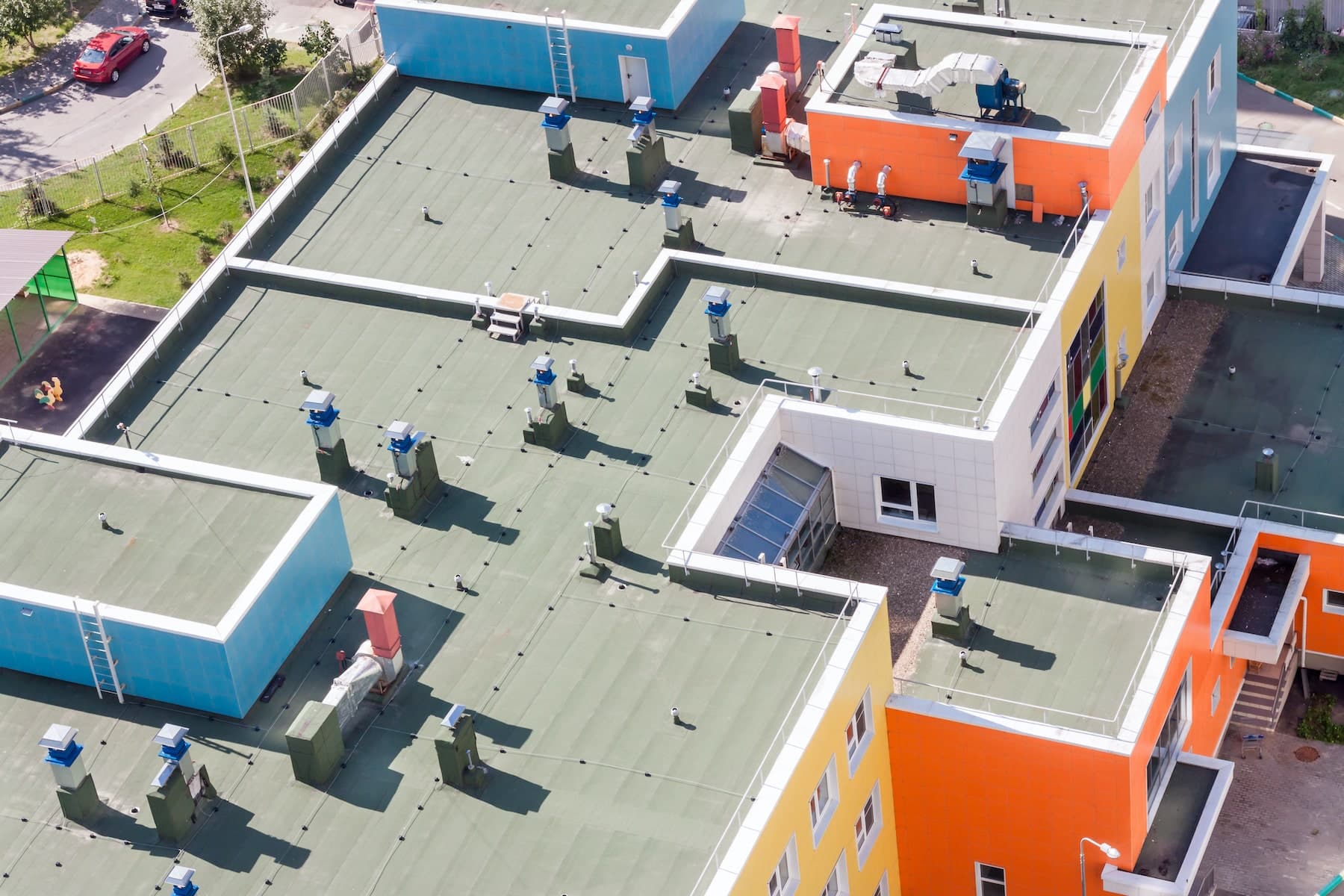Winter Energy Efficiency for Austin Roofs: A Comprehensive Guide
As winter temperatures fluctuate in Austin, your roof plays a crucial role in maintaining your home’s energy efficiency. Understanding how your roofing system impacts energy consumption during colder months can lead to significant savings and improved comfort. This comprehensive guide explores the relationship between your roof and winter energy efficiency, providing practical solutions for Austin homeowners.
Key Takeaways:
- How Does Your Roof Affect Winter Energy Costs?
- What Are the Signs of Poor Roof Energy Efficiency?
- Which Roofing Materials Provide Best Winter Insulation?
- How Can You Measure Roof Heat Loss?
- What Role Does Proper Installation Play?
- How Do Winter Conditions Impact Energy Efficiency?
- What Upgrades Improve Winter Energy Performance?
- When Should You Schedule Energy Assessments?
- How Does Ventilation Affect Energy Efficiency?
- What Are the Latest Energy-Saving Technologies?

How Does Your Roof Affect Winter Energy Costs?
Your roof’s impact on winter energy costs extends far beyond simple temperature regulation. During Austin’s winter months, a properly maintained and energy-efficient roof can reduce heating costs by 20-30%. The roofing system acts as your home’s primary defense against heat loss, managing the complex balance between indoor comfort and outdoor conditions. Professional energy audits often reveal that roofing systems account for up to 40% of a home’s heat loss during winter months.
What Are the Signs of Poor Roof Energy Efficiency?
Identifying energy efficiency issues in your roofing system requires attention to several key indicators:
- Unusually high heating bills during winter months
- Uneven temperature distribution throughout your home
- Ice dam formation in rare freezing conditions
- Excessive condensation in attic spaces
- Cold spots on upper floor ceilings
Professional roofing contractors can perform detailed assessments to pinpoint specific areas of concern and develop targeted solutions.
Which Roofing Materials Provide Best Winter Insulation?
When it comes to winter insulation, not all roofing materials perform equally. Metal roofing has emerged as a leading choice for Austin homeowners seeking energy efficiency, offering superior insulation when properly installed with modern underlayment systems. Traditional asphalt shingles, while common, can be enhanced with advanced insulation technology to improve their thermal performance. Tile roofing provides natural insulation properties but requires proper installation to maximize its energy-saving potential.
The most effective winter insulation often comes from a layered approach:
- Premium roofing materials with high R-value ratings
- Advanced underlayment systems
- Proper radiant barrier installation
- Strategic insulation placement
- Professional-grade weatherization materials
How Can You Measure Roof Heat Loss?
Modern technology has revolutionized how we measure and analyze roof heat loss. Professional energy audits utilize several sophisticated methods to assess your roof’s energy performance:
Thermal imaging cameras reveal heat loss patterns invisible to the naked eye, helping identify specific areas where energy efficiency can be improved. Blower door tests measure air leakage and help pinpoint areas requiring better sealing. Professional grade moisture meters track condensation patterns that can impact insulation effectiveness. These comprehensive assessments provide detailed data about your roof’s thermal performance and guide targeted improvements.
How Do Winter Conditions Impact Energy Efficiency?
Austin’s unique winter climate creates specific challenges for roof energy efficiency. Temperature fluctuations, ranging from mild days to occasional freezing conditions, put particular stress on roofing systems. These changes can:
- Cause thermal shock in roofing materials
- Create condensation issues in poorly ventilated areas
- Stress seals around roof penetrations
- Impact insulation performance
- Affect overall energy consumption patterns
What Upgrades Improve Winter Energy Performance?
Improving your roof’s winter energy performance involves strategic upgrades tailored to Austin’s climate conditions. Professional roofing experts recommend a multi-layered approach that includes both immediate improvements and long-term solutions. The most effective upgrades typically begin with a comprehensive energy audit to identify specific areas requiring attention.
Modern energy-efficient roofing solutions include:
- Reflective roofing materials that manage both summer heat and winter warmth
- Advanced insulation systems designed for variable temperatures
- Smart ventilation solutions that adjust to weather conditions
- High-performance underlayment materials
- Energy-efficient skylight installations
When Should You Schedule Energy Assessments?
The timing of energy assessments plays a crucial role in maximizing your roof’s winter performance. Professional roofing contractors recommend conducting thorough energy assessments during the fall months, before winter temperatures arrive. This proactive approach allows time for necessary upgrades and ensures your roofing system is prepared for seasonal changes.
A comprehensive assessment schedule should include:
Regular evaluation of insulation effectiveness throughout the changing seasons. Monitoring of energy consumption patterns to identify potential issues early. Checking seals and barriers before extreme weather events. Assessment of ventilation system performance as temperatures fluctuate. Regular inspection of energy-efficient features to ensure optimal performance.
How Does Ventilation Affect Energy Efficiency?
Proper ventilation serves as a cornerstone of roof energy efficiency during winter months. A well-designed ventilation system helps manage temperature fluctuations, prevent moisture accumulation, and maintain consistent indoor comfort levels. Understanding the relationship between ventilation and energy efficiency is crucial for maximizing your roof’s performance.
Ventilation impacts energy efficiency through several mechanisms:
- Managing attic temperature variations
- Controlling moisture levels that can impact insulation
- Preventing ice dam formation in freezing conditions
- Maintaining proper air circulation
- Supporting overall HVAC system performance
What Are the Latest Energy-Saving Technologies?
The field of roof energy efficiency continues to evolve with new technologies and innovations. Modern solutions combine traditional best practices with advanced materials and smart technology to maximize energy savings. Professional roofing contractors can help you evaluate which new technologies might benefit your specific situation.
Recent innovations include:
Smart roofing materials that adapt to temperature changes, providing optimal insulation in varying conditions. Advanced monitoring systems that track energy performance in real-time. Integrated solar solutions that complement traditional roofing systems. New generation insulation materials with superior thermal properties. Automated ventilation systems that respond to changing weather conditions.
Maximizing your roof’s winter energy efficiency requires a comprehensive understanding of various factors and implementation of appropriate solutions. By working with professional roofing contractors to assess, upgrade, and maintain your roofing system, you can significantly improve your home’s energy performance during winter months. Regular monitoring and proactive maintenance ensure sustained energy efficiency throughout the season.
The investment in roof energy efficiency not only reduces winter heating costs but also contributes to overall home comfort and environmental sustainability. Remember that each home’s needs are unique, and professional guidance is essential for developing the most effective energy-saving strategy for your specific situation.






